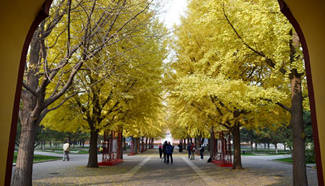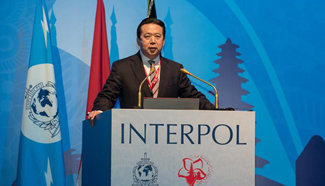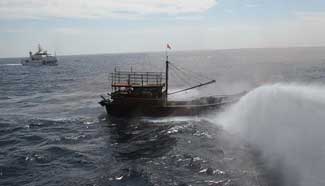BEIJING, Nov. 10 (Xinhua) -- A large tomb believed to be that of an empress during the Three Kingdoms period (A.D. 220-280) has been discovered in central China's Henan Province, archaeologists announced on Thursday.
Located to the south of Xizhu Village in the Luoyang City, the tomb is 52 meters long and 13.5 meters wide, extending to a depth of 12 meters down a ramp, according to Luoyang City Cultural Relics and Archaeology Research Institute.
"Its layout and seven flights of stairs suggest the tomb belonged to a high-level royal figure in the Cao Wei state. Judging from the objects we uncovered and historical records, it might the empress of Cao Rui," said Shi Jiazhen, head of the institute.
Cao Rui succeeded his father Cao Pi to rule Wei, one of the three kingdoms. Cao Pi was the son of Cao Cao, a famed warlord.
According to the institute, the tomb was discovered by a villager on July 19, 2015 and due to fears of robbery the institute to began the excavation immediately.
"The tomb has already been severely damaged by robbers as early as in the Song Dynasty (A.D. 960-1279), and many tiles have been taken away," Shi said.
Archaeologists have so far unearthed more than 400 pieces of ceramics, lacquer, bronze, iron and jade as well as some 100 stone tablets recording the objects buried inside the tomb.










